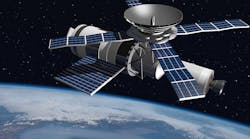A Path to Nowhere —
On December 7, 2020, the Federal Communications Commission (FCC) awarded 180 bidders $9.23B to deliver broadband to 5,220,833 locations in 49 States and 1 Territory in the Rural Digital Opportunity Fund (RDOF) 904 auction. This was exciting news, as 85% of the winning bids were in the Gigabit Tier, and 99.7% of the winners promised to deliver at least 100Mbps to these unserved and underserved Americans.
Eighty-five percent (85%) of the non-Gigabit awards and nearly $900M went to Elon Musk and Starlink, which may result in 642,925 American homes in 35 states being relegated to get their broadband service from low earth orbit (LEO) satellites. These unserved and underserved households will likely not be able to obtain the necessary speeds required to provide a high quality, uninterrupted Internet experience.
Can Satellites Meet the Need?
Over the past century there was a massive population shift to cities. By the 2010 census, data showed nearly 80% of the US population lived in urban areas. Interestingly, the urbanization trend may now be reversing, accelerated by several factors including: pandemic-related work from home (WFH) mandates, the desire to improve quality of life, and the financial benefits of leveraging the lower cost of living available outside of congested, expensive cities.
There are also many economic opportunities best suited to rural areas, including agriculture, transcontinental transportation, forestry, mining, energy production (both fossil fuels and alternative energy), and many types of manufacturing. These industries all require a rural workforce.
Unfortunately, these industries and the individuals employed by them cannot do it without broadband. Based on the most recent 706 report, the FCC believes there are 23.1M Americans who cannot receive 25/3 Mbps — what the Commission currently defines as broadband speeds. Researchers at Broadband Now believe this number could be as high as 42M Americans.1
Broadband is no longer a luxury. It is essential to rural America for economic development, education, healthcare and other critical services. Precision farming is a critical example, using ground sensors, drones, and satellite data, to precisely analyze and monitor applications on a foot-by-foot basis for water and nutrients to measure soil saturation and other critical measurements. These technologies are enhanced by emerging Internet of Things (IoT) services and applications that can help move markets forward. But all require the transmission of tremendous amounts of data to be effective. This data growth will not be met with LEO technologies — period.
InvisiLight® Solution for Deploying Fiber
April 2, 2022Go to Market Faster. Speed up Network Deployment
April 2, 2022Episode 10: Fiber Optic Closure Specs Explained…
April 1, 2022Food for Thought from Our 2022 ICT Visionaries
April 1, 2022Today only about 40% of America has access to fiber broadband, and communities that lack fiber will continue to perpetuate the Digital Divide. This holds true for rural, urban and suburban communities — in every region of the country.
Further, areas without fiber won’t see 5G, and the Digital Divide will be exacerbated, rather than alleviated, over time.
So, what is wrong with launching LEO satellites into space to deliver "100/20 Mbps" broadband service to those communities and residents of the Eastern Appalachia and the Pacific Northwest? Indeed, there are a number of ways to get a broadband signal to these hard-to-serve areas. We have seen exploratory attempts such as using hot air balloons, drones, and other clever low-cost ways, to serve high-cost areas. However, these communities deserve better, and it’s not in the taxpayers’ best interest to continue to re-subsidize the same areas over and over again as the critical need for bandwidth grows over time. We need to put these communities on a path to closing the Digital Divide with sustainable critical infrastructure by making the appropriate, long-lasting investment now.
What can we do now? Hasn’t the ship sailed on the first round of RDOF?
While Starlink was awarded $885.5M, the FCC must first carefully scrutinize each winner’s long-form application which must outline in greater detail the network design, certified by an engineer and the company’s wherewithal to deliver the broadband performance promised in the auction. Given then the lack of transparency of Starlink’s plans and its LEO satellite technology, the Fiber Broadband Association and NTCA commissioned the strategy and analyst firm Cartesian to build a model that the FCC can use to better evaluate Starlink’s ability to meet the RDOF performance criteria.2 We set the parameters and variables of this model to the most favorable assumptions for Starlink, assuming it can launch 12,000 satellites on schedule and align its constellations in a perfect optimal formation. Further, we assumed each satellite could deliver its theorical performance of 20 Gbps — and then we ran the model. (See Figure 1.)
Figure 1. Base Case Scenario: Percent of RDOF Locations Where Demand Is Met
The results showed that even under the best possible conditions, 56% of subscribers in these RDOF locations will experience congestion and poor performance in a forecasted low-demand scenario. More locations will be negatively impacted if RDOF usage is higher, or SpaceX launches fewer satellites by 2028. RDOF service could also be significantly worse if Starlink’s capacity is allocated to non-RDOF use cases, which will be the case as Starlink is actively promoting its service to other residential and commercial subscribers. If just 20% of its capacity is allocated to commercial (non-RDOF) subscribers, only 22% of RDOF subscribers will have sufficient broadband capacity (15.3 Mbps to 20.8 Mbps). Additionally, the FCC will have to change its RDOF performance measurement and monitoring methods and procedures as Connect America First (CAF)-style performance testing may fail to detect capacity issues due to the dynamic nature of the Starlink network.
The sensitivity analysis (shown in Figure 2) reveals that the number of underserved subscribers will be higher if Starlink serves other users or is late in its launch schedule.
Figure 2. Sensitivity Analysis for 2028
We hope the FCC is able to fully utilize the model provided to carefully vet the Starlink long-form applications, and will reject LEO satellite submissions. Not only will LEO satellites not meet the performance requirements, but most importantly, the technology does not provide a path to fiber.
Fiber as an Essential Service
The pandemic has highlighted the critical needs for sustainable robust broadband infrastructure (upstream and down) for WFH, online school, connecting with family, and all essential services. Fiber is the ultimate critical infrastructure solution on every dimension. It delivers the fastest, lowest latency, highest capacity, and secure critical infrastructure solution.
Fiber delivers much more than broadband connectivity. It delivers jobs and economic development to communities where it’s deployed. A recent study of Chattanooga’s fiber project resulted in 9,516 new jobs and $2.69B in economic impact.3
Fiber also delivers critical infrastructure for Smart Grid modernization. In the Chattanooga study:4
- Fiber deployment resulted in 2.11M customer interruptions avoided.
- 43% reduction in outage minutes on average.
- $421M in benefits during major weather events.
- It reduced 1,865 MW of demand and 10,331 MWh of electricity consumption over the
10-year study period.4
Fiber also delivers the 5G future. A 5Gnnetwork requires a high-capacity, low-latency fiber infrastructure.
IN SUMMARY: communities without fiber will end up on the wrong side of a widening Digital Divide.
What’s Next?
The RDOF long-form applications were due to the FCC on January 29. From past experience, we saw that the first dollars began to flow in the CAF II program about 6 to 8 months after long-form applications were filed. We should expect something similar for the RDOF, although the process could be sped up for winners that are experienced providers deploying proven FTTH technology.
The FCC typically announces auction winners in tranches, so we would expect to see a wave of fiber projects getting approved first. Then, we anticipate that it will take the FCC longer to review the applications of providers using fixed wireless to provide Gigabit speed service. Finally, the LEO satellite applications will be reviewed.
The funding for any applications that are denied or withdrawn will likely be rolled over into the RDOF Phase 2 auction. The Fiber Broadband Association will be advocating for a waterfall auction for subsequent funding rounds, awarding fiber-ready projects first before considering other technologies. These other technologies can provide an important role in delivering sustainable broadband if they provide a path to a community’s ultimate goal of delivering fiber-based critical infrastructure fit for the future.
Resources and Notes
- https://broadbandnow.com/research/fcc-underestimates-unserved-by-50-percent
- Cartesian LEO analysis and model. See https://ecfsapi.fcc.gov/file/10208168836021/FBA_LEO_RDOF_Assessment_Final_Report_20210208.pdf
- Lobo Study. See https://www.usnews.com/news/best-states/tennessee/articles/2021-01-26/study-chattanooga-fiber-project-made-27b-impact-in-decade
- ibid.
For more information, please email [email protected] or visit fiberbroadband.org. Follow us on Twitter @fiberbroadband.











